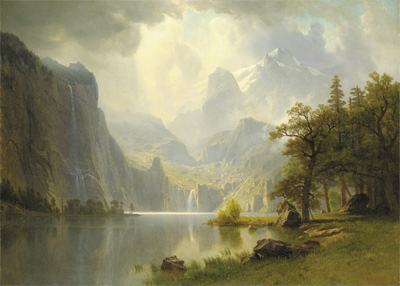Lands of Osai/Lands of the Far East
Introduction/Filler
Contents
Regions of the Continent
The Dark Isle
A name as ancient as the land itself, the Isle is regarded by mainlanders with superstition and suspicion, home to the brutal savages of Arcachon and their bloody god. The white cliffs that face the rough seas lie upon the horizon for those looking from the cold shores of the northern edge of the continent, both an impregnable stronghold and a base for the boats of raiding parties. It is heavily wooded with tall pines and covered by small valleys and heathland, though hospitable it is host to the lone city of Enlod on the northern end.
Culture
Although the depiction of the inhabitants as savage barbarians is not entirely true, there are many aspects to their life that may cause the more peaceful mainlanders to percieve them as such. In hospitality they are warm and welcoming; however there is a dark mystery that lies behind their eye, something in their behaviour which has always unnerved foreigners. Fast to act and slow to forget, their geography has not only allowed for a rather unique culture to develop but has ingrained in the islanders a streak of isolationist behaviour which seems to mix easily with the vast rural population.
Their religion centres around the worship of Adghar, called Adgharanism, which holds animals like the crow central to their almost totemic ideaology and emphasises the darkness of war, with priests and priestess’ moving with units before battle, losing themselves in a frenzy of emotion and commune with the spirits and Adghar. Raven’s feathers are tied into their hair and it is the wailing of these holy men and women which can cause more fear than the wild charges of their painted tribesmen. There are even rumours of blood sacrifice, although this writer does not know this for sure.
They are all not uncivilised barbarians intent only on bloodshed, however and although feuds and small scale warfare are common across the island, there is a strong culture of storytelling and music which finds its way into the lyrical way in which the islanders speak. Their styles of dress favour earthy colours and simple designs, especially evident in the long, loose briggae that the men wear, a symbol of their ascendance into manhood. Harps, lutes, flutes and drums are favoured by local musicians, which when mixed with the heady mead shared around at festival time whips the islanders into intoxicated frenzy.
Fewer people can read and write than in the densely populated riverplains of the Raen Duin and the southern cities, yet their history is passed down not through books but from father to son and through the great bards who can memorise thousands of lines, renowned throughout the land and offered hospitality wherever they travel. More than just bards travel the land now, as traders and other foreigners make their way from other lands as the people of the island itself expand out of their traditional boundries into the lands of old foes like Sartania. Although the common people stick to what they know, the nobles are quick to adopt new fashions in their speech and dress.
Significant Sites
Drow Caverns
A complex network of caves rumoured to rest far beneath even the deepest mine shafts, these caverns have rarely been seen by common men for many years. Although most laugh off the stories of dark creatures which hide below and steal little children from their beds, it is not so strange a tale when considering the nature of the locals. Mines have strangely been abandoned whenever they have broken into these caverns, frustrating the efforts of enteprising lords seeking to reap the wealth of the land.
Legend tells that the Drow, whom it is believed inhabit the darkness, were in fact the original inhabitants of the island. It is often very difficult to distinguish in these tales what is truth and what is fanciful storytelling.
The Ossaet Peninsula
The Great Northern Plains
A vast area of open plains and grasslands stretching from the Dark Straits to the Lenaz River.
Raen Duin and the Sartanian March
These vales and woodlands, heartland of the ancient Arcaean Empire, lie at the northern end of the mainland both north and east of the great plains that run across the western seaboard. Though colder than their counterparts in the south they are no less filled with flora and fauna, especially the wolves and deer herds common in the wilderness between settlements. Rolling hills and wooded vales are a trademark of this region, rich in resources and the food that the fertile banks of the Raen Duin produces.
Culture
Significant Sites
White Spire of Nocaneb
Wulfen Gate
A giant gate of hard wood bound by bronze, the Wulfen Gate is the main defensive point of the city of Remton, harkening back to the days of the golden age which saw the rapid expansion of a small nation under a fledgling force and the command of a man simply known as the Patriarch. It is named so for the engraving of wolves hunting in the stones above. The tree from which the wood comes from has long since dissapeared from the forests of the continent, having been logged extensively due to the sheer density and strength of its fibres.
Wooden swords from this period are still found from time to time, although with the discovery of iron and the quality of steel forged in the north they had been made obsolete.
